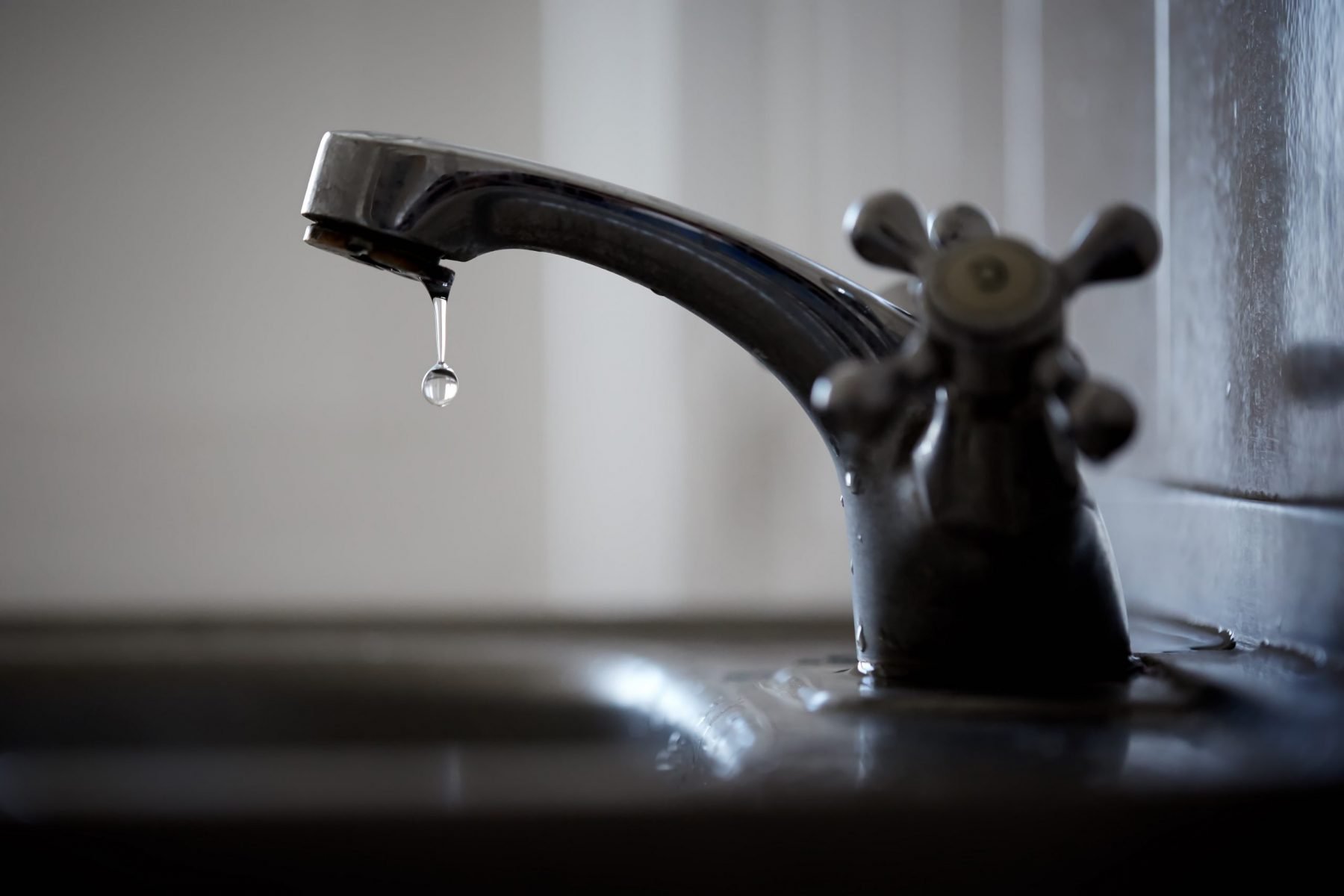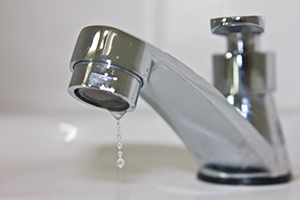Learning When a Busted Faucet Can Damage Your Home
Learning When a Busted Faucet Can Damage Your Home
Blog Article
The content further down involving Here's How to Fix a Leaky Faucet is exceedingly informative. You should look it over.

Introduction
A leaky tap could feel like a minor annoyance, however its repercussions prolong much past the periodic drip. Recognizing the effects of a leaking faucet is important for both home owners and the setting. In this article, we'll explore the various impacts of this common home issue and why addressing it quickly is necessary.
Sources Of Leaky Faucets
Dripping taps can arise from a range of elements, including damage, high water stress, and deterioration. With time, the consistent use faucets can cause worn-out seals and gaskets, causing leaks to create. In addition, too much water pressure can put strain on plumbing components, causing leaks. Corrosion and corrosion can likewise deteriorate faucet components, making them vulnerable to leakage.
Water Wastage
One of one of the most considerable repercussions of a leaky tap is water waste. Even a little drip can amount to gallons of wasted water over time. This not only drives up water bills but also adds to water deficiency and ecological deterioration. Attending to dripping taps immediately is important for saving this valuable resource and decreasing its effect on the planet.
Financial Influence
In addition to drainage, leaking taps can additionally have a considerable financial influence. Enhanced water costs are a direct effect of water waste, setting you back property owners thousands of dollars every year. Moreover, the expense of fixing water damage triggered by leakages can be considerable, specifically if left unattended for a prolonged duration.
Environmental Effect
The ecological impact of dripping taps prolongs past water wastage. By conserving water, house owners can add to broader efforts to minimize water scarcity and safeguard all-natural ecosystems. Sustainable options such as rain harvesting and water-efficient fixtures can even more lower the environmental footprint of family water use.
Technological Solutions
Innovations in technology have resulted in the advancement of clever taps and water-saving devices that help reduce water waste. Smart faucets use sensors to discover activity and readjust water circulation appropriately, lowering waste without giving up ease. Water-saving devices such as aerators and low-flow showerheads are also effective in conserving water without compromising performance.
Global Point of views
While leaking faucets may look like a localized issue, they contribute to wider worldwide difficulties such as water shortage and climate change. In regions currently encountering water stress and anxiety, every decline counts, making leakage avoidance and repair work vital. By embracing water-saving practices and investing in lasting modern technologies, property owners can play their part in addressing these pushing worldwide problems.
Regulatory Measures
Federal government guidelines play a vital function in reducing the impact of dripping faucets and advertising water preservation. From developing codes that need water-efficient fixtures to water-saving motivations and refunds, policymakers have a variety of devices at their disposal. By carrying out and implementing these regulations, federal governments can make sure that homeowners focus on water conservation in their daily lives.
Neighborhood Impact
Resolving leaking taps requires cumulative efforts at the neighborhood level. By increasing awareness concerning the significance of water preservation and offering sources for leak discovery and repair, regional authorities can encourage property owners to do something about it. Efforts such as water-saving refund programs and leakage detection campaigns can incentivize actions change and advertise responsible water usage.
Situation Researches
Real-life examples of the effect of dripping faucets highlight the relevance of proactive upkeep and prompt repairs. From water damage to escalating water expenses, the consequences of disregarding leakages can be extreme. By sharing these case studies, property owners can much better recognize the significance of dealing with leaking taps promptly.
Educational Campaigns
Educational campaigns play an important function in elevating recognition concerning the results of leaky faucets and promoting water conservation methods. With workshops, workshops, and on-line sources, home owners can learn how to spot and repair leaks themselves. By equipping individuals with understanding and tools, instructional projects can promote a culture of accountable water usage within neighborhoods.
Health Worries
Leaking taps can produce helpful environments for mold and mildew and mold growth, positioning health and wellness dangers to owners. The presence of mold can intensify respiratory concerns and allergies, particularly in at risk individuals. Furthermore, water damage arising from leaks can endanger the structural honesty of buildings and lead to costly repair services.
Do it yourself vs. Expert Repair
When confronted with a leaky faucet, home owners typically discuss whether to try repairs themselves or employ a specialist plumber. While DIY repair work can save cash, they may not always address the hidden concern efficiently. Expert plumbing technicians have the proficiency and equipment to identify and deal with leakages properly, making sure lasting services and comfort for home owners.
Safety nets
Preventing leaky taps needs routine upkeep and aggressive measures. Simple tasks such as replacing damaged washers and seals can protect against leaks from creating. Furthermore, updating to top quality components and decreasing water pressure can help extend the lifespan of taps and reduce the risk of leaks.
Conclusion
Finally, the effects of a leaky faucet extend much beyond the occasional drip. From water wastefulness and enhanced water costs to health and wellness worries and environmental influence, the consequences of neglecting leakages can be substantial. By resolving leaking faucets promptly and embracing water-saving techniques, property owners can alleviate these results and contribute to a more sustainable future.
Why You Shouldn’t Ignore a Leaky Faucet in Your Home
What Causes a Leaky Faucet?
Various factors can cause a leak, from loose and worn-out parts to corrosion. Your faucet has four essential components from which most plumbing issues will stem: the O-ring, the valve seat, the washer and the gasket.
What Is an O-Ring?
The O-ring is a stem screw that fastens parts of the faucet in place, preventing water from leaking out of the spout. Depending on your faucet type, the stem might have multiple O-rings. Water will drip from the faucet’s handles and base if this part breaks or deteriorates.
What Is a Valve Seat?
The valve seat controls the flow and temperature of the water. Found at the base of the handle, it works as a seal for the faucet’s stem. The valve seat ensures the water is allowed to flow or is blocked as the handles dictate. You’ll know it’s malfunctioning when water leaks from your faucet’s sides.
What Is a Gasket?
The gasket is found between the water inlet and the valve stem. It creates a seal between the faucet and the sink, holding its joints by aerators attached to the stem’s head. Water will trickle out from the base if the gasket isn’t working.
What Is a Washer?
The washer secures the handles and prevents leakage, serving a similar purpose to the O-ring. While the O-ring is ordinarily round and made from an elastic material, such as rubber, the washer is square-shaped and composed of brass, copper and other hard metals. If it malfunctions, corrodes or has been improperly installed, water will leak out of the handles, causing that incessant faucet drip.
Why Is a Leaky Faucet Dangerous?
A leaky faucet left alone for too long can have significant consequences.
Pest Infestations
Since bugs and rodents gravitate towards the scent of water, a leaky faucet will draw pests to your sink. Both are looking for leaks accessible through crawl spaces, which a faucet provides. If you leave water dripping for too long, you run the risk of an infestation.
Rust
If one of the faucet parts has started to corrode, the resulting rust can spread to your pipes and valves with startling speed. The rust might even lead to cracks or other impairments, resulting in more severe plumbing issues.
Your sink could also sustain damage from a leaky faucet. The water in your tap possesses sparse elements of calcium and iron that can stain your sink with repeated and prolonged exposure. Once those elements in the water have been open to the air for some time, your sink will start to rust, creating marks that can be difficult to remove.
https://www.tomsmechanical.com/blog/why-you-shouldnt-ignore-a-leaky-faucet-in-your-home

I am just very eager about Potential Health Risks Associated With Leaky Faucets and I really hope you appreciated the entire post. Sharing is nice. Helping people is fun. Bless you for being here. Don't hesitate to pay a visit to our blog back soon.
Report this page